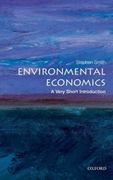Economics question
2. Refer to The Fruit Farm produces only apples and pears. The table above shows the maximum possible output combinations of the two fruits using all resources and currently available technology. (35 points) a. Graph the Fruit Farm's production possibilities frontier. Put apples on the horizontal axis and pears on the vertical axis. Be sure to Identify the output combination points on your diagram. b. Suppose the Fruit Farm is currently producing at point D. What is the opportunity cost of producing an additional 8,000 kilos of pears? C. Suppose the Fruit Farm is currently producing at point D. What happens to the opportunity cost of producing more and more pears? Does it increase, decrease or remain constant? Explain your answer. d. Suppose the Fruit Farm is currently producing at point G. What happens to the opportunity cost of producing more and more apples? Does it increase, decrease or remain constant? Explain your answer. e. Suppose the Fruit Farm is plagued by a maggot infestation which destroys apple trees but not pears. Show in a graph what happens to its PPF. 3. The following table shows the amount of good A and good B that two countries could produce if they devoted all of their resources to that good. Assume both countries have the same amount of resources and the trade-off between good A and good B remains constant as resources are shifted from one good to another. (35 points) Canada India Good A 200 Good B 400 900 a. Which country has the absolute advantage in good A? In good B? b. What is Canada's marginal opportunity cost of producing good A? good B? What is India's marginal opportunity cost of producing good A? good B? d. Which country has the comparative advantage in good A? In good B? e. Assume both countries wish to expand their consumption of good B while at the same time maintaining their consumption of good A. Is this possible if they refuse to trade? Why? Assume both countries agree to trade. Show that they will be able to expand their consumption of good B while maintaining their consumption of good A. What are the total gains from exchange, measured in units of good B?1. The purpose of economics is to provide managers a way to think efficiently of choices and decisions. Economic thinking and decision-making recognize that because of scarcity, something cannot be obtained without giving up something else. Consequently, we must make our decisions by comparing the costs and benefits and evaluating the tradeoffs. In doing so, five principles of economic thought come into play: tradeoffs, incentives, opportunity costs, marginal thinking, and voluntary exchange. Explain with a specific example of each how you apply these five principles of economic thought in your everyday life. (30 points) Possible Output Apples Pears Combinations (thousands of kilos) (thousands of kilos) A 70 B 60 20 C 50 36 D 40 48 30 56 20 60 G 10 63 H 0 65








